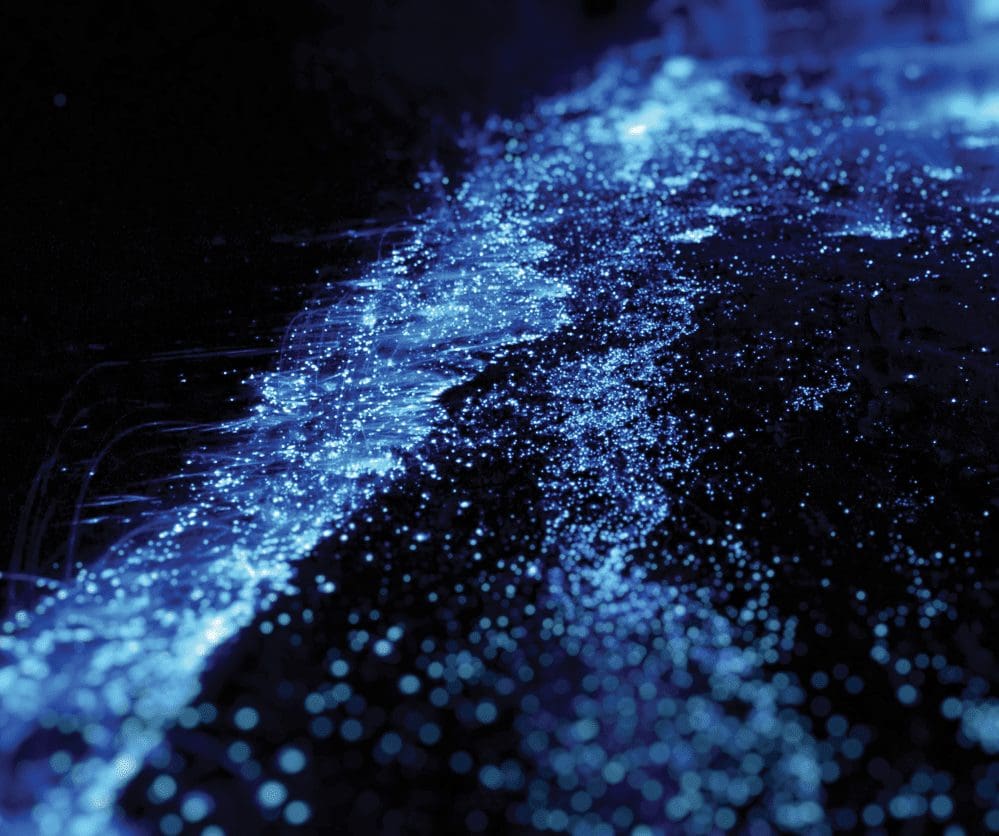
What is bioluminescence ?
One of the most spectacular natural phenomena is the bioluminescence of the ocean, particularly the plankton. The bioluminescent plankton is a natural phenomenon where planktonic organisms emit light in response to a stimulus. This phenomenon occurs due to the presence of a protein called luciferin, which reacts with an enzyme called luciferase, and produces a chemical reaction that emits light.
This article will explore the bioluminescent plankton, its characteristics, and its importance to the ecosystem.
What is Bioluminescent Plankton?
Bioluminescent plankton refers to planktonic organisms that produce light. These organisms include dinoflagellates, comb jellies, and some species of jellyfish. These organisms emit light in response to different stimuli such as water movement, touch, or even sound.
Dinoflagellates are single-celled organisms that are responsible for the majority of bioluminescent plankton. These organisms are found in all oceans and seas around the world, and they emit blue-green light when agitated. The bioluminescence of dinoflagellates is often seen as a blue-green glow in the water.
Comb jellies, also known as ctenophores, are another group of bioluminescent plankton. These organisms are found in most of the world’s oceans and emit a rainbow of colors in response to touch.
Jellyfish are another group of bioluminescent plankton. These organisms emit light from specialized cells called photocytes, which are located in their tentacles.
CLICK HERE TO BOOK YOUR BIOLUMINESCENCE TOUR IN PUERTO ESCONDIDO
Why Do Bioluminescent Plankton Glow?
The primary reason bioluminescent plankton glow is for protection. When an organism agitates the water, it can attract predators. By emitting light, bioluminescent plankton can startle predators and deter them from attacking. Additionally, some bioluminescent plankton use their glow to attract prey, such as small fish or zooplankton.
The process of bioluminescence is also used for communication between organisms of the same species. For example, dinoflagellates use their bioluminescence to communicate with each other to form large blooms, which can be seen as glowing patches in the water.
How Can You See Bioluminescent Plankton?
Bioluminescent plankton are best seen at night, and in areas with little to no light pollution. The best way to see bioluminescent plankton is by taking a night-time swim or kayak in areas where bioluminescence is known to occur. Some popular destinations for seeing bioluminescent plankton include Puerto Rico, the Maldives, and Jamaica.
When observing bioluminescent plankton, it’s important to minimize any light pollution, including flashlights or cell phones. Turning off all lights and allowing your eyes to adjust to the darkness can make it easier to see the bioluminescence. Additionally, moving your hands or feet in the water can agitate the plankton and cause them to emit more light.
CLICK HERE TO BOOK YOUR BIOLUMINESCENCE TOUR IN PUERTO ESCONDIDO
Why are Bioluminescent Plankton Important?
Bioluminescent plankton play an essential role in the ocean’s ecosystem. They are a critical component of the food chain, providing food for many marine animals, including fish, whales, and dolphins. Additionally, the blooms of bioluminescent plankton can indicate changes in the ocean’s water quality, such as nutrient levels or pollution.
Furthermore, bioluminescent plankton are of great interest to scientists and researchers. The bioluminescence process has been studied extensively and has resulted in new developments in biotechnology and medicine. For example, researchers are exploring the use of bioluminescent proteins for imaging and diagnostics.
CLICK HERE TO BOOK YOUR BIOLUMINESCENCE TOUR IN PUERTO ESCONDIDO
Conclusion
Bioluminescent plankton is a fascinating natural phenomenon that is both beautiful and important to the ocean’s ecosystem. These organisms emit light in response to stimuli, such as water movement or touch, and use their glow to deter predators or attract prey.
Observing bioluminescent plankton is a unique and memorable experience. Many popular destinations around the world offer the opportunity to see bioluminescent plankton, but it’s essential to minimize any light pollution to ensure the best viewing experience.
Apart from their aesthetic appeal, bioluminescent plankton are crucial to the ocean’s food chain and can provide valuable information about changes in the water quality. Additionally, the study of bioluminescent proteins has led to new developments in biotechnology and medicine.
In conclusion, the bioluminescent plankton is an awe-inspiring natural phenomenon that deserves appreciation and protection. Observing and learning about these organisms can provide a deeper understanding of the ocean’s ecosystem and the importance of preserving it for future generations.




